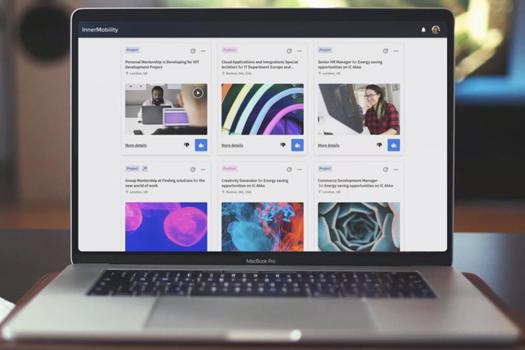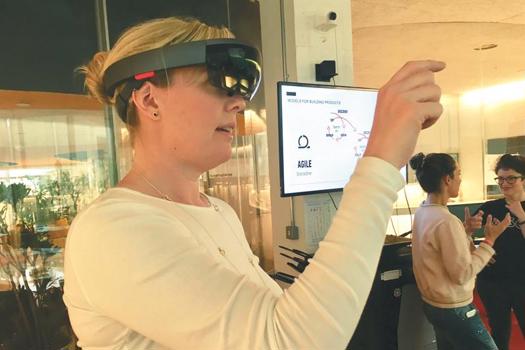The organisation
Founded in 1934 by university teachers and others including the second Chancellor of the Federal Republic of Germany, Ludwig Erhard, GfK SE (or Gesellschaft für Konsumforschung, "Society for Consumer Research"), is Germany’s largest market research organisation.
Having grown organically, and through acquisition (including most recently, buying NOP World in 2005 and Knowledge Networks in 2011), Gfk is now the fourth largest market research firm globally, behind Nielsen Company, Kantar Group and Ipsos.
Based in Nuremberg, it has operations in more than 100 countries, employs more than 13,000 staff worldwide, and has annual revenues of more than €1.5 billion.
Today its mantra is ‘providing answers in a disruptive world’ and the polls it runs include Germany’s monthly Consumer Climate Survey, as well as reports on everything from the purchasing power of Europeans to the size of the small domestic appliance market.
The challenge
Having grown as a traditional market research company, GfK is a company of statisticians and data experts – but that’s not how the business wants to be seen going forward.
“Business is being disrupted all around us, and our aim is to move away from reporting on historical trends, to predicting future outcomes,” says Jason Flynn, global head of learning, GfK.
“We live in a world where there is too much data, so what we want to say to clients going forward is that we’ll help you pick the strongest signals.”
It requires, he argues, a transformative approach to continuous learning and development – to pull people more towards the sorts of competencies it needs to start moving in this direction.
The strategy
Significant about this project was that a first attempt had already been made to create a more embedded and continued learning culture – but it had failed miserably.
“We put in a global learning platform in 2015, with more than 300 separate courses, expecting it to have a transformative impact,” Flynn says. “But we found it yielded less than 6,000 course completions in its first year – less than one piece of training per head.”
It was when Flynn became head of learning in 2018 that he decided a different approach was needed. “What our previous attempt showed was that what we really needed to do first was have our people understand the reason we were transforming in the first place – so that they could understand what their place was in it.”
“We needed to couch learning much more in terms of how people could stay ‘fresh’ with their skills,” he says, “and in seeing this, we also recognised our global learning centre wasn’t working hard enough to become a go-to destination for employees.”
Part of the problem, he confides, was that the Saba-provided LMS system initially didn’t inspire people. “People weren’t able to explore and search for content very easily,” he says.
“At that point in time, staff had to know exactly what they wanted to find, rather than be able to see what took their fancy, so we decided to apply three principles: create relevance & simplicity; create smaller, bite-sized learning modules; and include staff themselves in co-creating new content.
"We thought that through the latter, this would encourage staff to also be ‘owners’ of their learning and create the knowledge-sharing culture we wanted.”
To make the centre simpler, Flynn decided to strip it back to just eight learning topic banners – and also decided to make them more obvious to encourage people when searching.
Banners included ‘getting started’; ‘commercial excellence’ and ‘personal skills’. A floating banner would appear weekly with the latest courses.
“What we failed to realise before was that people don’t search a catalogue, they search topics. Just through presenting what we had available better, we felt we could make a big difference,” he says.
To really show that GfK meant business, course material was updated too, making it much more relevant, with available courses to choose from rising to 430.
The result
From having a learning centre that wasn’t being used, these relatively small tweaks have had a big impact. “To the year ending May 2019, we’ve had a year-on-year rise of 31% in terms of people visiting the centre, and course completions are up 79%,” says Flynn.
“We’ve hit more than 82,000 course completions and have seen the impact of different types of learning really have a transformative effect.” He adds: “Views of videos have reached more than 35,000.”
Interestingly, people are using the platform much more intuitively, and are seeking out learning that ‘tops up’ their skills too, rather than necessarily teaching them something brand new.
He says: “A surprise is that in the last six months, 400 people have completed our communication skills learning. That’s great, because people are clearly embracing wanting to be better at having new types of conversations with our clients.”
The system too has now created more than 1,000 ‘smart lists’ – suggested learning paths sent to repeat consumers of the training - to encourage them to keep developing.
But it’s around involving staff in creating content that Flynn is most proud. “Now, about 50% of our content is co-created, which is a massive success,” he says.
Future plans include enabling staff to access learning through their smart devices (currently training is mostly done in work time, on work laptops), and to that end, in the background Flynn has been working to optimise all content for mobile for the last 18 months.
Its weekly ‘learning moments’ teaser banners are also being tweaked to ensure they maintain consistent engagement by altering the type of content people can instantly consume. “
The most recent one scored 400 hits in three days because it clearly signalled people to a bite-sized piece of learning,” he says. “If there’s one thing we’ve learned,” Flynn concludes, “it’s clearly this – get the environment right in the first place, and people will come.”
This piece appears in the March 2020 print issue. Subscribe today to have all our latest articles delivered right to your desk









